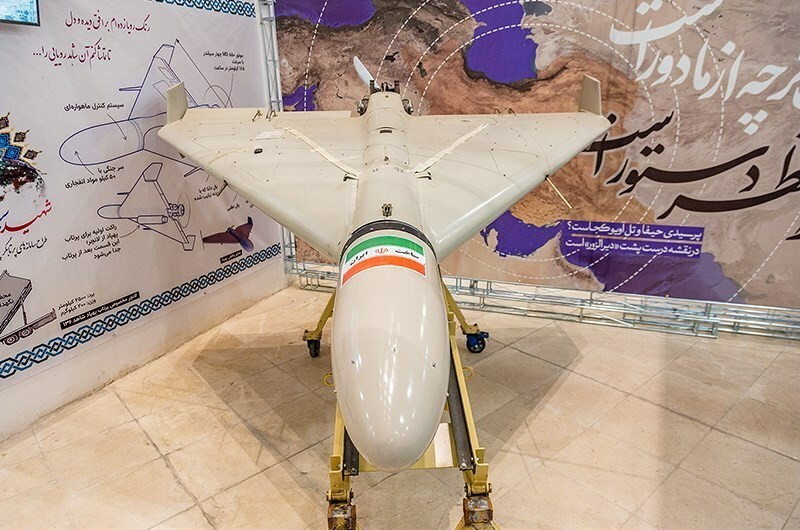SHAH ALAM: Ukraine has seen raging fighting in the country since the Russian invasion in February 2022. The war – called by Russia Special Military Operation – has seen the rise of the machines from unmanned aerial to ground vehicles and special systems.
Early in the start of the conflict, the more traditional unmanned aerial systems (UAS) were at the forefront of the battles as both countries tried to seek dominance on the battlefield. However, as the war drags on small UASes – from one-way attack (OWA) or kamikaze drones to first person view (FPV) reconnaissance and attack drones have dominated on both sides of the of the battlefield.
Some much so that artillery and aerial drones are now dominating the battlefield where enemy and friendlies cris-crossing the front lines to find targets from artillery pieces to the infantry. And it was the drones that helped the Ukrainians in late 2023 and 2024 when western countries failed to deliver enough arms and munitions to help them in the front lines. So much so that Ukrainian President Volodymyr Zelenskiy wrote on Telegram in June, “Drones practically saved the front line,”


The kamikaze drones from both sides are a mixture of imports and locally made ones, from Russia they are the Iranian Shaheds and the home-grown Lancets. Ukraine has used the Polish Warmate and American Switchblade drones to attack Russian forces. It has also locally developed short, medium, and long-range attack drones with the latter flown to attack targets as far away as Moscow. Ukraine lacking long range bombers had to rely on these drones to attack Russia’s military and industrial target as a mean to blunt the nuclear power advantage in conventional arms.
As for the FPV drones both sides used locally developed ones though most of their components are supplied, in some instances from the same companies in China. Ukraine’s FPV drones are basically divided into three categories, small ones armed with grenades and smaller bombs to attack infantry and other soft skin target, medium carrying anti-tank warhead to attack tanks and other armoured vehicles and large – dubbed Baba Yaga – to deliver large ordnance like TM-62 anti-tank mines against all sorts of targets. These drones also used as mine layers flying over fields and roads at night creating minefields to stop or blunt any assault. Apart from attacking targets, these drones are also used for reconnaisance and surveilance duties.
The latest FPV to enter battle are termite and hunter drones. Both sides are using thermite drones at the moment. Usually made of a mixture of powered iron oxide (in other words, rust) and aluminum, burning thermite is used on various targets including hideouts and trenches.
As for the hunter drones, most of the footages shown on social media are those from Ukrainian. These hunter drones are used to attack other drones – loitering and reconnaissance drones – mostly by ramming into them. Video footage of these hunter drones attacking manned helicopters have also been made public, some resulting in emergency landing and a few outright fatal crashes.
Apart from aerial drones, unmanned ground vehicles (UGVs) have also made their mark in the battle but not as much as the former. Most of the UGVs used in the battle so far are used as transporters but some have also been pressed into route clearance and mine-laying vehicles.
Using UGVs in route clearance and mine laying reduces the risk to soldiers allowing them to concentrate on the battle at hand. UGVs small size is also a boon as it is difficult for the other side to spot them and destroy them.
Apart from these two roles, UGVs have also been used for casualty evacuation with their small size again making it difficult to be spotted unlike full size ambulance either tracked or wheeled ones.
Some UGVs are also fitted with machine guns to act as strong points of defensive points to prevent the enemy from conducting flanking attacks.
of detecting and jamming UAV communication and navigation links, including in automatic
mode. This model provides both sector and omnidirectional jamming to counter a swarm of
drones.
With many aerial and ground drones in the battlefield, both sides have employed various special equipment to deter and disrupt these vehicles. Various electronic equipment has been employed on vehicles, command posts, hide-outs and even individual soldiers to disrupt the enemy from employing the drones -either aerial or ground drones.
The EW complexes are constantly updated to protect against the latest drones. So much so that some drones are also control using fibre optic cables. This is like in the 1960s and 1970 when most armies fielded wire guided missiles.
— Malaysian Defence
If you like this post, buy me an espresso. Paypal Payment